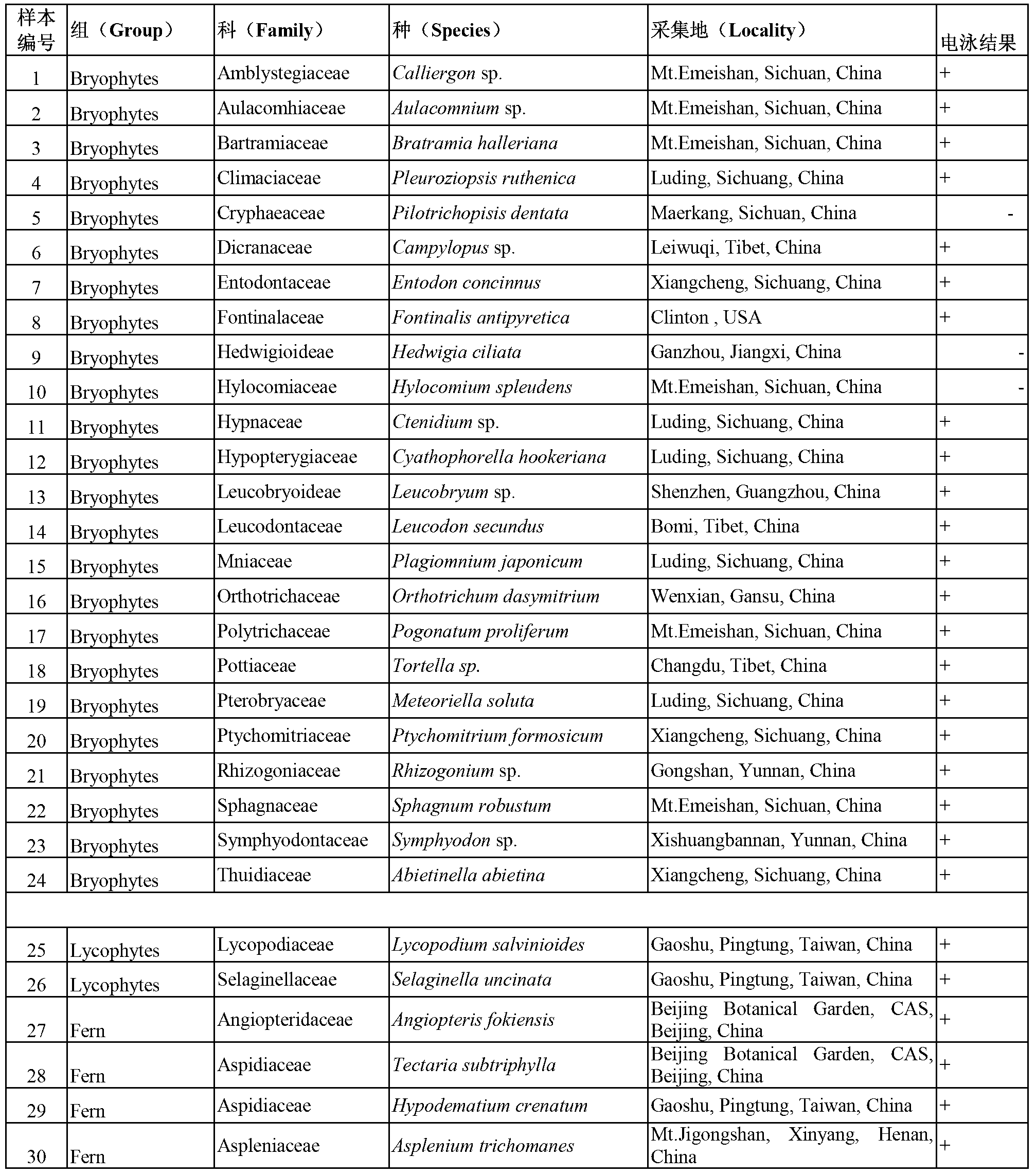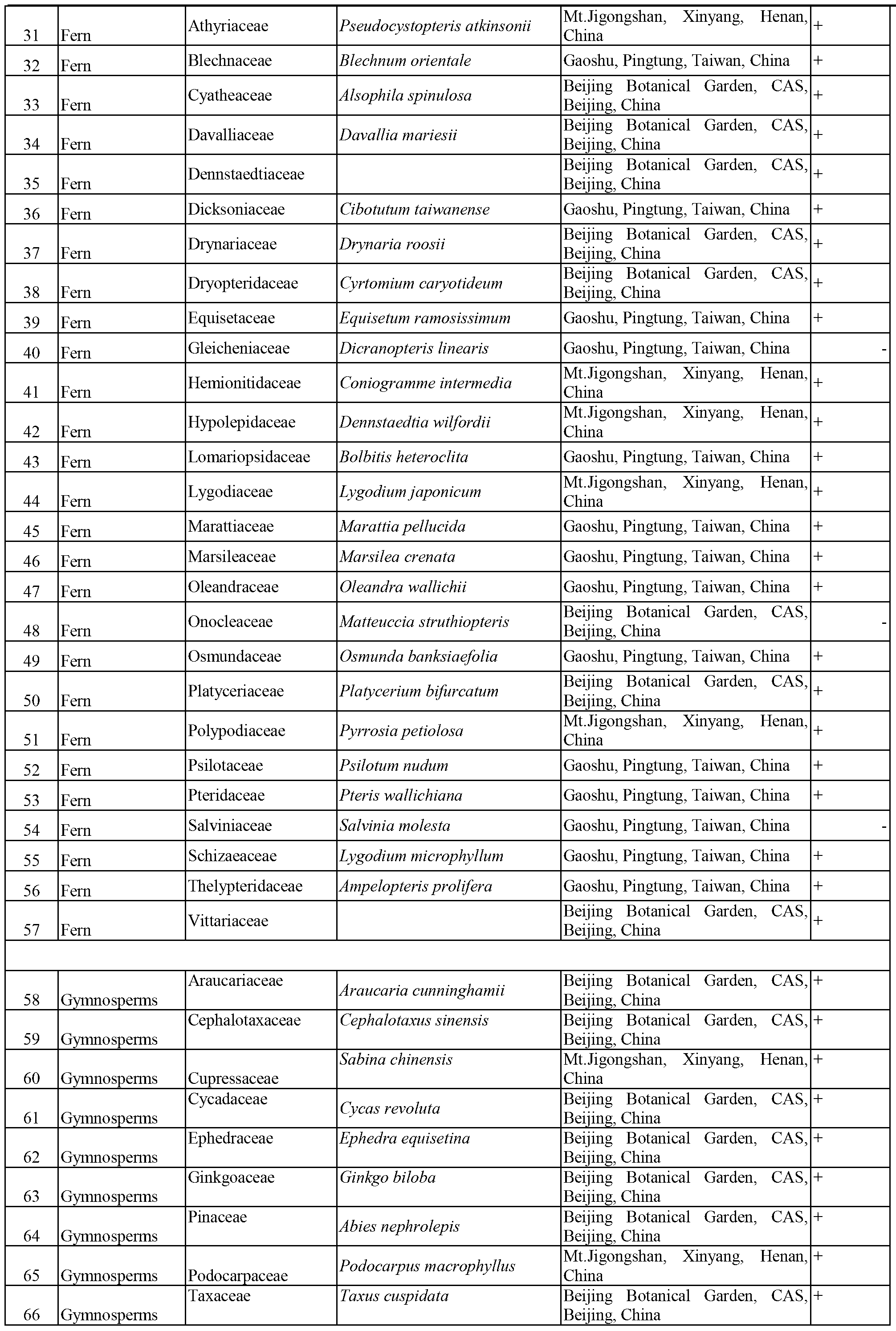Specific primer pair based on rbcL gene and used for identifying land plant species and application thereof
A specific primer pair and species identification technology, applied in the determination/inspection of microorganisms, biochemical equipment and methods, DNA/RNA fragments, etc., can solve problems such as loss and achieve good amplification effects
- Summary
- Abstract
- Description
- Claims
- Application Information
AI Technical Summary
Problems solved by technology
Method used
Image
Examples
Embodiment 1
[0016] Embodiment 1, the design of universal primer
[0017] The rbcL gene is located in the large single copy region (LSC) of the chloroplast genome (cpDNA), between the atpB and accD genes. The rbcL gene in higher plants does not contain introns, has a length of 1428bp, and encodes a total of 476 amino acids. Previous research work has shown that the rbcL gene has the characteristics of good versatility, easy amplification, and easy comparison. It is a very important gene in both molecular phylogenetic research and DNA barcode research. As one of the core DNA barcodes of plants, the rbcL gene can solve and improve the versatility of rbcL primers, and the design can be used in major plant groups such as angiosperms, gymnosperms, ferns, bryophytes, green algae and charophytes. Universal primers will promote the application of rbcL gene in phylogenetic studies and DNA barcoding.
[0018] The rbcL gene is the earliest molecular marker used in molecular systematics. In Genbank,...
Embodiment 2
[0024] Embodiment 2, the application of universal primer
[0025] There are 178 angiosperm families and 178 samples (one sample per family). There are 11 families and 11 samples of gymnosperms (one sample for each family). There are 33 families of ferns and 33 samples (one sample is selected for each family). There are 24 families and 24 samples of bryophytes (one sample is selected for each family).
[0026] A total of 178+11+33+24=246 samples (see Table 1).
[0027] 1. Extract the genomic DNA of the plant to be tested.
[0028] 2. Using the genomic DNA extracted in step 1 as a template, perform PCR amplification with a primer pair composed of rbcL-Forward Primer and rbcL-Reverse Primer to obtain a PCR amplification product.
[0029] PCR amplification system (10ul): 10×PCR Buffer (Mg 2+ ) 1ul, 2mM dNTP1ul, 5uM rbcL-Forward Primer0.5ul, 5uM rbcL-Reverse Primer0.5ul, 5ng-50ng / ul genomic DNA1ul, 5U / ul Taq DNA polymerase0.1ul, ddH 2 O5.9ul.
[0030] The instrument for PCR ...
PUM
 Login to View More
Login to View More Abstract
Description
Claims
Application Information
 Login to View More
Login to View More - R&D Engineer
- R&D Manager
- IP Professional
- Industry Leading Data Capabilities
- Powerful AI technology
- Patent DNA Extraction
Browse by: Latest US Patents, China's latest patents, Technical Efficacy Thesaurus, Application Domain, Technology Topic, Popular Technical Reports.
© 2024 PatSnap. All rights reserved.Legal|Privacy policy|Modern Slavery Act Transparency Statement|Sitemap|About US| Contact US: help@patsnap.com










